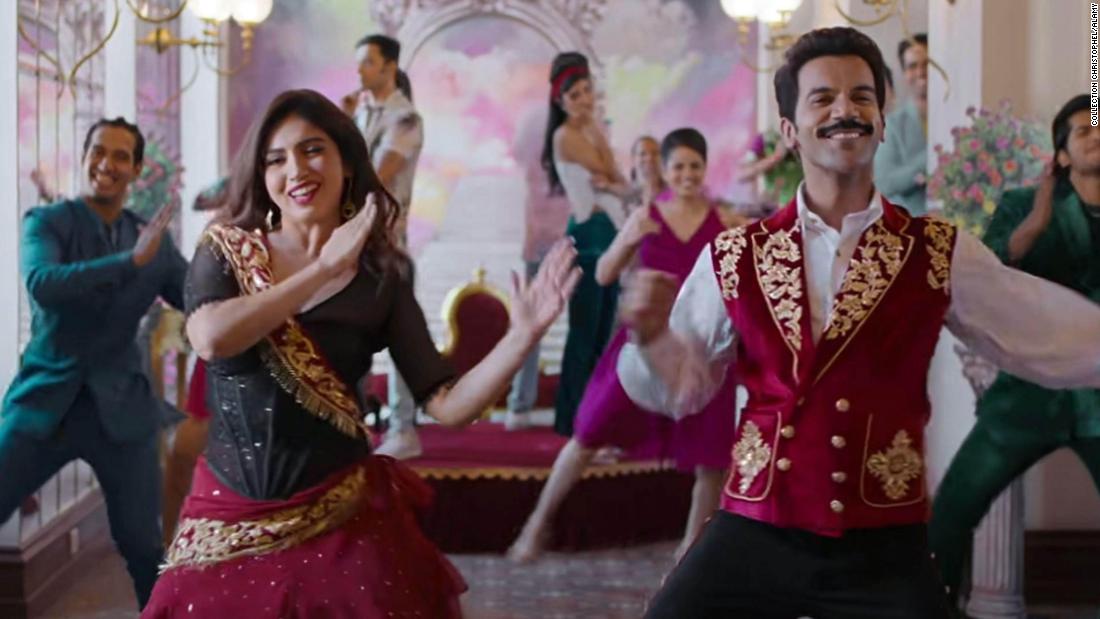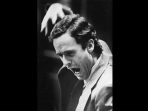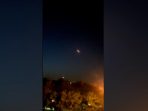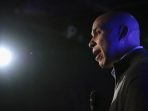Bollywood is filled with love stories about going against societal norms or familial expectations.
Though taboo relationships have long been a favorite subject of Indian filmmakers, few mainstream Hindi films have explored romance between LGBTQ characters.
“Badhaai Do” tells the story of a gay man and a lesbian who enter into a marriage of convenience to appease their families. While being married, they each pursue their own romantic relationships. Credit: Collection Christophel/Alamy
Since then, a number of Bollywood rom-coms geared toward mass audiences have put LGBTQ relationships front and center. “Shubh Mangal Zyada Saavdhan” (2020), “Chandigarh Kare Aashiqui” (2021) and “Badhaai Do” (2022) each feature gay or trans characters in relationships who eventually come up against disapproving family members. True to the Bollywood formula, the films include song and dance numbers and culminate in happy endings.
“They get you emotionally involved and caring about this love story. They make the parents the enemies of love and make them have to change their mind,” said Ulka Anjaria, a professor at Brandeis University who teaches South Asian literature and film. “It just shows the complete beauty of queer romance.”
LGBTQ-focused plotlines might seem radical for the Hindi film industry — in some ways, they are. Still, same-sex desire and longing aren’t completely new terrain for Indian cinema, Anjaria and other scholars say. What’s changed, rather, is how explicitly it’s portrayed.
Films in the ’90s and ’00s paved the way
Nearly 30 years before “Ek Ladki Ko Dekha Toh Aisa Laga,” filmmaker Deepa Mehta explored a sapphic relationship in her drama “Fire.”
Though “Fire” was an English-language film, it starred prominent Indian actors such as Shabana Azmi and Nandita Das. It told the story of two sisters-in-law in an Indian household who, after being neglected by their husbands, find comfort and sexual pleasure in each other.

Deepa Mehta’s 1996 film “Fire” explored a romantic and sexual relationship between two women. Credit: Hamilton-Mehta Productions
“‘Fire’ was really important in propelling that conversation to the center stage and making people talk about it,” Anjaria said. “In that sense, it’s really seen as a foundational moment in queer legibility in India.”

Director Deepa Mehta at a candlelight vigil in 1998 after her film “Fire” was pulled from several theaters over objections from right-wing groups. Credit: John McConnico/AP
In the years that followed, dramas such as “My Brother… Nikhil” (2005) and “Margarita With A Straw” (2014) portrayed queer characters sensitively — the former is the story of a man diagnosed with HIV who battles homophobia from his parents and Indian authorities, while the latter is about a bisexual teenager with cerebral palsy who falls in love with a young blind activist.

A movie theater worker removes a poster of the 2004 Hindi film “Girlfriend” after outrage from far-right Hindu groups. Credit: Rajesh Kumar Singh/AP
Today, such films are widely understood to be homophobic. Though they’ve aged poorly, Anjaria said some of these examples did pave the way for the more explicit LGBTQ representation seen today. In “Dostana,” for instance, the character Sameer’s mother is at first distraught at the thought of her son being gay but ultimately comes to love and accept his (fake) partner as a son-in-law — that moment, when removed from its true context, is relatively progressive for its time.
“Even though that ended up being unnecessary because they’re not really a couple, that scene actually became really important for a model of what actual parental acceptance would look like,” Anjaria said.
Same-sex love has long been a fixture of South Asian art
Though commercial Hindi films have only recently begun to show explicitly LGBTQ couples, same-sex relationships and gender fluidity have been depicted in art and literature from the Indian subcontinent for thousands of years.
The ancient Kama Sutra describes sex between two men as well as two women, while 18th century Urdu poetry depicts same-sex desire in the same tones and registers as heterosexual desire, according to Ruth Vanita, a writer and author of “Love’s Rite: Same-Sex Marriages in Modern India.”
“Thereafter, educated Indians, including all nationalists from right to left and everything in between, internalized the Western idea that homosexuality is unnatural, abnormal, a sin and a crime,” Vanita wrote in an email to CNN.
The language and labels around same-sex relationships were not widespread in India in the early decades of the country’s film industry. But certain themes in those films have resonated with LGBTQ communities over the years.

LGBTQ communities have adopted certain scenes and songs from films such as “Sholay” to celebrate queer love. Credit: Mary Evans/Ronald Grant/Everett Collection
Many Hindi films from the ’50s to the ’80s depict intense male friendships that can be interpreted as gay, said Vanita. In films such as “Dosti” (1964), “Anand” (1971) and “Sholay” (1975), big name actors portray close companions who embrace with tenderness, sing songs about their undying love for each other and make sacrifices for one another — even as they pursue female love interests. While some Indian audiences from that era may not have seen these onscreen bonds as anything more than platonic, Vanita said it’s not a stretch to read them as same-sex love.
“Since no studies were conducted of audience response to this in the 1950s-1990s, we have no way of knowing what individuals thought or felt,” she noted. “What we do know is that homosexuality was well attested in Bombay film-making circles; film-makers were not naïve about it.”
There’s still room for progress
The LGBTQ-centric Hindi films of the last few years are notable for how the love between queer characters perseveres against all odds. But they aren’t perfect forms of representation.

In “Ek Ladki Ko Dekha Toh Aisa Laga,” Sonam Kapoor plays a woman attempting to come out to her family. Credit: Fox Star Studios/Everett Collection
Recent Indian films that deal with LGBTQ relationships also veer into preachiness, said Meheli Sen, an associate professor at Rutgers University who studies Bollywood. “Chandigarh Kare Aashiqui” spends a considerable amount of time explaining to viewers what it means to be trans vis-à-vis body parts, while others feel designed to instill tolerance and open-mindedness in viewers by the end.
“I’m personally very interested in how the representation of queer sexuality can go beyond sloganeering and go beyond pedagogic, message-heavy films about how we should all be more accepting,” Sen said.

Participants hold flags during Mumbai’s 2020 Queer Azadi Pride, an event promoting LGBTQ rights. Credit: Francis Mascarenhas/Reuters
Streaming platforms — which are less prone to censorship and allow viewers to experience media in the privacy of their homes — offer creatives more avenues for exploring sexuality. Several recent projects have expanded the Indian canon of LGBTQ stories, tackling similar themes in sometimes more nuanced ways than popular cinema.
“Cobalt Blue,” which centers on a brother and sister falling in love with the same man, was released directly to Netflix last year. “Maja Ma,” in which superstar Madhuri Dixit plays a mother forced to come to terms with her sexuality, premiered last year as an Amazon Prime original. Meanwhile, TV series from Amazon such as “Made in Heaven” and “Four More Shots Please!” include major storylines that center queer characters without overly focusing on their sexualities.
It’s too soon to tell whether greater LGBTQ representation in Indian media might help shift social norms in the country, Sen said. But the breadth of films and TV series being made today is an encouraging sign.
“I don’t think it’s inconsequential that you can see queer people as regular people in media texts — they’re not these freaks of nature, they’re not dressed weirdly,” Sen said. “Just normalizing certain kinds of sexual subjectivities is a big, big part of the job, and that is happening.”
Top image: A scene from Shelly Chopra Dhar and Gazal Dhaliwal’s “Ek Ladki Ko Dekha Toh Aisa Laga.”
Sumber: www.cnn.com






